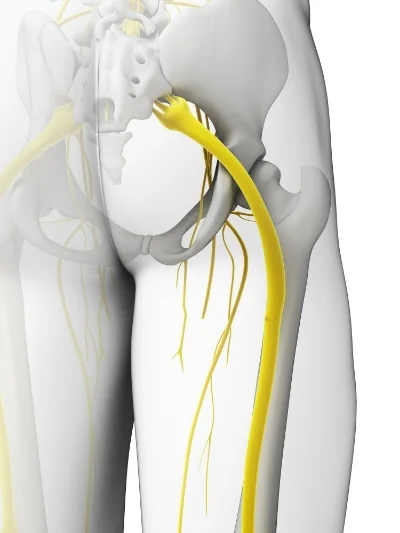Piriformis Syndrome
Condition Profile: Piriformis Syndrome
Also more commonly known as sciatica, piriformis syndrome is a dysfunction relating to the sciatic nerve that originates from the lower portion of the lower back and sacrum, and travels bilaterally to the centre of the leg and down towards the back of the foot.
The condition piriformis syndrome occurs from a number of predisposing factors that lead to the piriformis muscle being shortened and tight. This leads to irritation of the sciatic nerve causing deep buttock pain and neurological symptoms that refer down the posterior-lateral portion of the leg to the back of the heel.
Causes
- Postural habits of turning your feet outwards when standing, or slouching your hips
- Lordotic curve/ anterior pelvic tilt
- Long periods of sitting e.g. working at a desk or driving
- Muscle imbalance (overactive piriformis and glutes with weak hip adductors)
- History of lower back pain (disc bulges and herniations)
- Genetics through hereditary hip conditions
- Immobility through hips due to poor flexibility and no stretching or exercise
Who Develops Piriformis Syndrome?
These are people who sit in cars/ trucks driving for hours each day such as cab drivers, truck drivers and those who travel a lot for work. Those who work at a desk are more likely to develop this condition due to immobility and the compression put on the sciatic nerve when seated. People who stand at work may also be at risk due to poor postural habits such as slouching to one side to stand or those with turned out feet on either one or both sides.
How can Richmond Rehab help?
Your Physio or Myotherapist can assess the severity of your Piriformis syndrome by measuring the range of movement at your hips while also performing orthopaedic testings and strength testings. We also use massage and dry-needling for treatment to loosen the glutes and Piriformis muscle to take the impact off the nerve, combined with joint mobilisations to free up the hip and lower back, and utilise nerve sliding techniques to reduce the nerves sensitivity. A tailored home care plan will also be prescribed to strengthen areas of the hip and stretches to lengthen muscles that are tight and stuck in contraction.
Basic Home Care Exercise Examples
Upper Hamstring Stretch
Lying face-up and bringing the targeted leg’s knee directly to your chest and holding around your bent knee. Hold for 30 seconds and repeat four times per day.
PIRIFORMIS & HIP ROTATOR STRETCH
From the previous stretch position, bring the targeted knee to the other side of your chest. Hold for 30 seconds and repeat four times per day.
Side-lying hip adduction strengthening exercise
Lying on your side with the targeted leg lying flat against the floor with your other leg out in front for balance during the exercise. Lifting your foot off the floor as far as it can go and holding at the end range for 3 seconds as you slowly release the leg down. This is one repetition, and aim for 16 repetitions each time and repeat 4 times per day.




